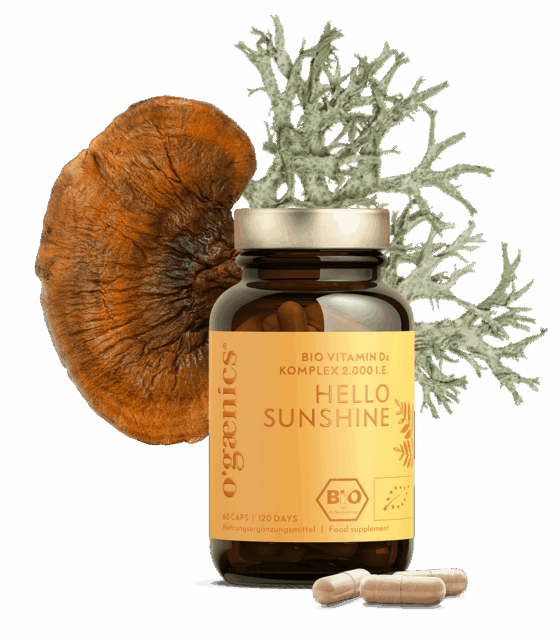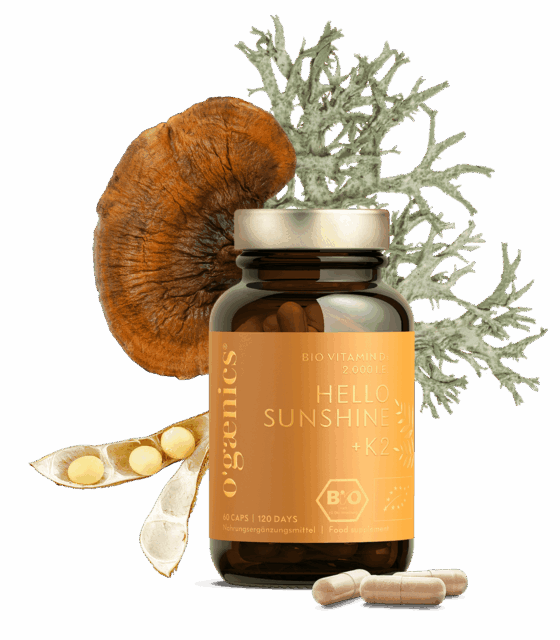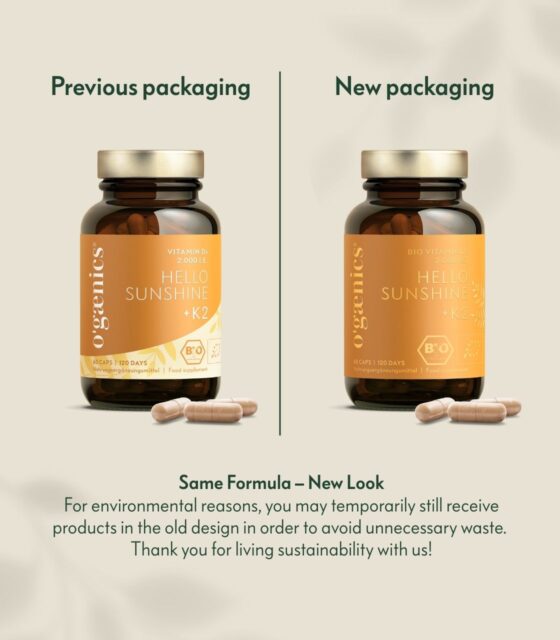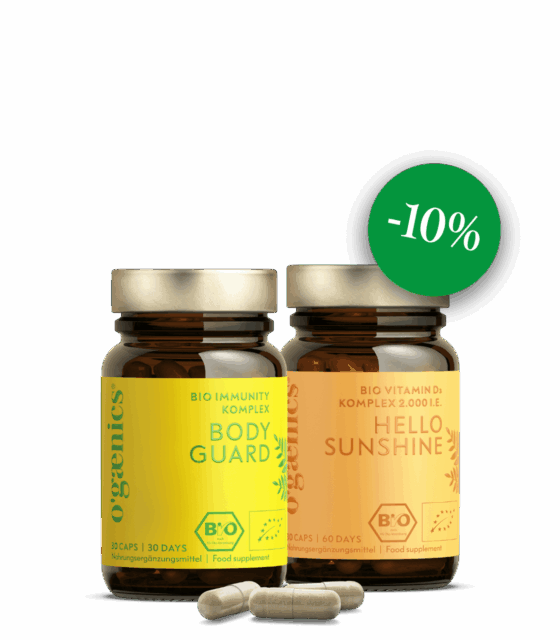Many people are at risk of a vitamin D deficit even in summer. Are you one of them?
Many people wonder whether or not it is necessary to take vitamin D in the summer. This is a fair question, since this vitamin is formed in the skin through sunlight, among other things. However, there are some groups of people for whom supplementation is important throughout the year. Find out if you belong to this group.
What do we need vitamin D for
In terms of its function in the body, the sunshine vitamin is more of a hormone than a vitamin. Each cell has a receptor for it. It supports the immune system and is therefore also particularly important for people with autoimmune diseases. The body also needs vitamin D to absorb calcium. Women with too low a vitamin D level therefore have a higher risk of osteoporosis. And let’s not forget about mood… many know that they feel more depressed in winter when there is less sunshine – ergo less sun vitamin.
Why the sun is often not enough as a source of vitamin D
Vitamin D is formed in the body through sun exposure on uncovered skin. However, in northern latitudes, the sun is only strong enough to stimulate vitamin D production in the skin for 3 to 4 months of the year, mostly from May to August. During these months, your skin will produce enough vitamin D if you’re outside without sunscreen for at least 20 minutes a day between 10 a.m. and 2 p.m. – preferably lightly dressed in shorts and a top. This means the arms and legs must be fully exposed to the sun without sunscreen during peak hours of maximum sun exposure. Do you do that? Then you may remain “supplement-free” over the summer months with respect to this vitamin.
But most of the people sit in the office during the day (and not even with top and shorts) and therefore do not achieve significant levels of vitamin D in summer. You just don’t get as much sun as you think. Therefore, you should stay on your normal daily ration in that case.
-
Set 2x Hello Sunshine | Bio Vitamin D3 Complex 2.000 I.U.
2-pack (=8-month supply) of natural vitamin D3 with 2,000 I.U. per capsule from organic lichen plus organic Reishi extract75,80 €79,80 €1.456,20 €1.383,21 € / kg
Who should supplement vitamin D even in summer
There are also some groups of people who should supplement the sunshine vitamin even in summer, whether they go out in the sun or not.
- Those who have a darker skin color, because then the skin naturally forms less sun vitamin
- If you go out of the house only with sunscreen (also in make up), because this impairs the vitamin D formation.
- If you eat a vegan diet, you have a higher risk of being deficient in this vitamin year-round
- If you are over 60 years old, because then the skin is thinner and can produce less sun vitamin itself
- If you are pregnant, because the healthy vitamin D status of the mother during pregnancy affects the development of the immune system in the unborn child. In case of a deficiency, the risk for the child to develop an autoimmune disease and allergy later on increases.
- If blood levels were low before summer, or if you are not out in the middle of the day without sunscreen, you should continue supplementing during the summer.
How much vitamin D do you need?
Requirements according to DGE (estimated values) |
in µg |
in I.E. |
| Adults | 20 | 800 |
| Pregnant | 20 | 800 |
| Breastfeeding | 20 | 800 |
Source: DGE
What should your blood level be?
in nmol/l |
in ng/ml |
Interpretation |
| <30 | <12 | Inadequate care with an increased risk of diseases such as rickets, osteomalacia and osteoporosis. |
| 30-<50 | 12-<20 | Suboptimal care with possible consequences for bone health. |
| 50 -<75 | 20-<30 | Adequate care in terms of bone health. |
| 75-<125 | 30-<50 | Adequate supply in terms of bone health with no other additional health benefits. |
| ≥125 | ≥50 | Possible oversupply, which can have negative health consequences for the body, for example hypercalcemia, which can lead to cardiac arrhythmias or kidney stones. |
Source: Robert Koch Institute
According to the DGE, the vitamin D level should be at least 50 nmol/l throughout the year. However, in the opinion of the Robert Koch Institute, this is equivalent to underuse. According to the unanimous opinion of international experts, the blood level should be 75 nmol/l).
If your blood level is ok, you have no major stress, are slim and have fair skin, and are outdoors regularly, 1,000 IU/day is the minimum amount to maintain vitamin D levels on a sustained basis. Otherwise, the demand can be much higher, even in the summer. A dose of up to 4,000 IU per day is possible and is considered safe.
You should definitely do a blood test now first to determine your starting point, because if the blood level is not ok, you will need much higher doses of 2000-4000 I.U. daily for three months (or until you get tested again) . Contact your family doctor or a laboratory for this. There are now also good home test kits available for purchase at pharmacies or online.
More on the topic
Read everything you ever wanted to know about vitamin D in this beginner’s guide.
How to recognize vitamin D deficiency can be found in this article: 6 signs of vitamin D deficiency.
A study has now found that vitamin D is effective against irritable bowel syndrome and flatulence.
Vitamin D deficiency can also be behind your hair falling out and is one of the best nutrients for hair loss.
-
Set 30-day immune cure
Hello Sunshine and Body Guard set to strengthen your immune system58,30 €64,80 €1.255,81 €1.129,84 € / kg












 No products in the cart.
No products in the cart.